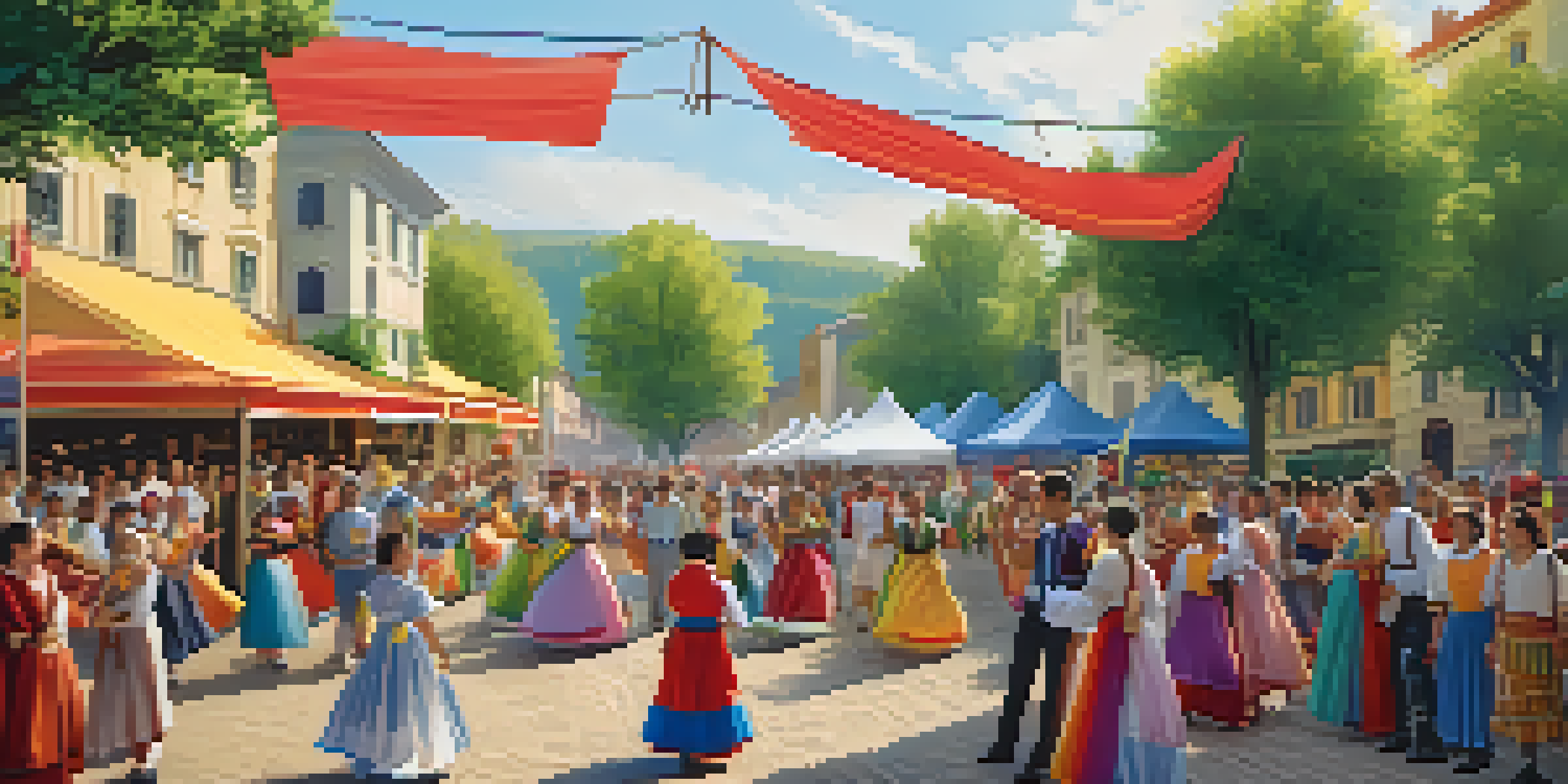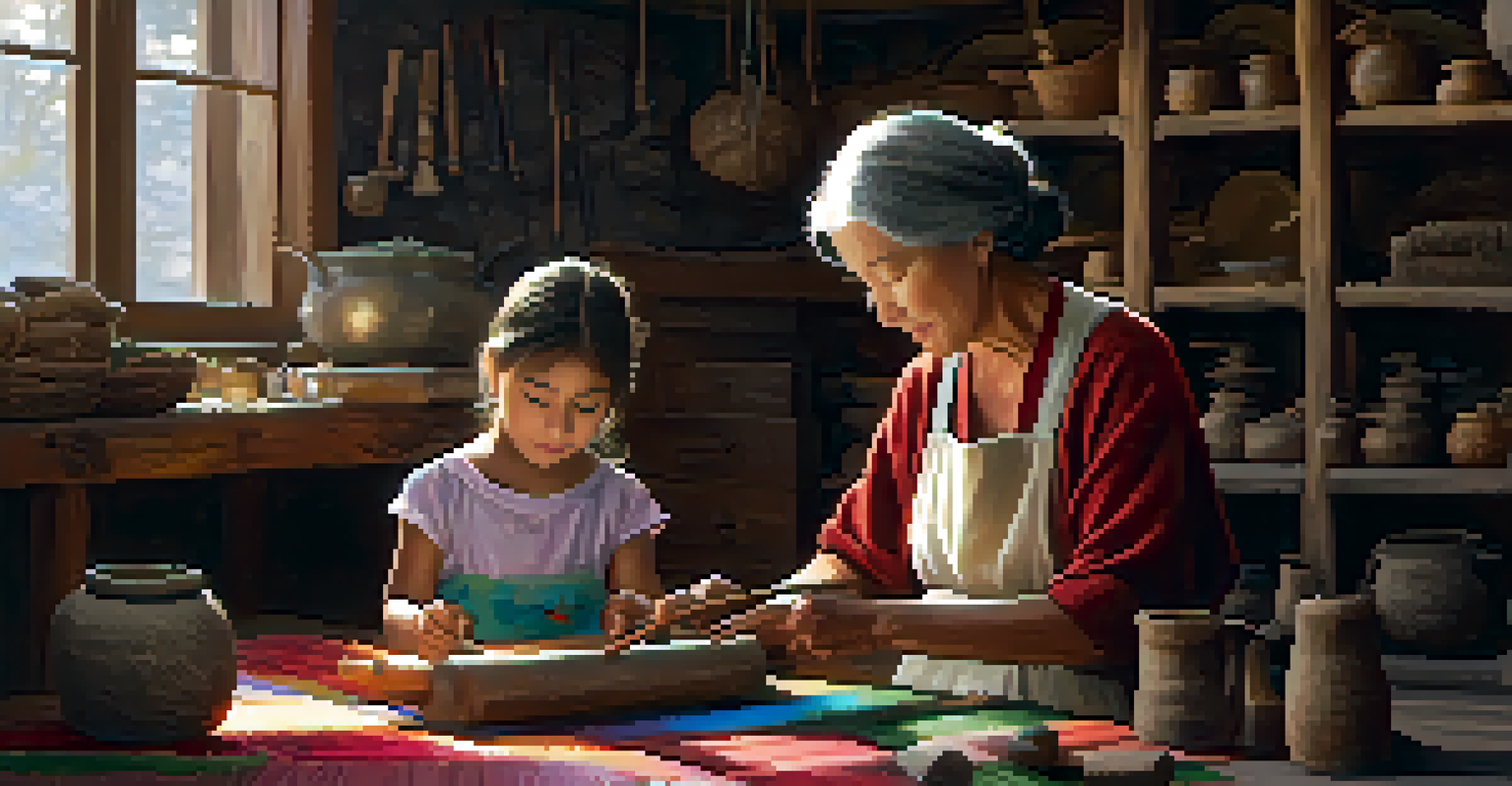Understanding Cultural Heritage: Importance and Preservation Efforts

What is Cultural Heritage and Why Does It Matter?
Cultural heritage encompasses the traditions, values, and artifacts that define a community's identity. It's what connects people to their past and shapes their future. For example, a local festival might not just be an event; it's a celebration of history, folklore, and community spirit that ties generations together.
Cultural heritage is the bedrock of our identity, a link to our past that shapes our future.
Understanding cultural heritage is crucial because it fosters a sense of belonging and pride among individuals. When people recognize their cultural roots, they are more likely to engage in their communities and promote social cohesion. This shared identity can unify diverse groups, allowing them to appreciate their differences while celebrating their commonalities.
Moreover, cultural heritage serves as a vital educational tool. It provides insights into historical events, social structures, and artistic expressions that have shaped societies. For instance, visiting a historical site can spark curiosity and inspire future generations to learn, explore, and preserve their cultural narratives.
The Role of Cultural Heritage in Identity Formation
Cultural heritage plays a pivotal role in shaping our identities. It influences how we see ourselves and how we relate to others. Just think of your favorite family traditions or cultural practices—these elements contribute to your personal narrative and sense of self.

For many, cultural heritage acts as a bridge to the past, offering lessons and values passed down through generations. This connection helps individuals understand their place within a broader societal context. For example, learning about one's ancestry can enhance self-esteem and instill pride in one’s lineage.
Cultural Heritage Shapes Identity
Cultural heritage is key to forming personal and communal identities, connecting us to our past and fostering pride in our roots.
As we navigate a rapidly changing world, the importance of cultural heritage in identity formation becomes even more pronounced. It provides stability and continuity, reminding us of who we are and where we come from, even amidst the chaos of modern life.
Challenges Facing Cultural Heritage Today
Despite its importance, cultural heritage faces numerous challenges, particularly in our globalized world. Rapid urbanization, climate change, and conflict can threaten the preservation of historical sites and traditions. For instance, many landmarks have been lost due to natural disasters or neglect, erasing significant cultural narratives.
Preservation of our cultural heritage is not only a responsibility but a privilege; it is our legacy for future generations.
Furthermore, commercialization can dilute cultural practices, transforming them into mere tourist attractions rather than authentic experiences. This shift often leads to the commodification of traditions, where the essence and meaning behind them are overshadowed by profit motives. It’s essential to strike a balance between celebration and commercialization.
Additionally, the rise of digital technology presents both opportunities and challenges. While it can help document and share cultural heritage, it can also lead to misinformation and misrepresentation. Ensuring that digital representations are accurate and respectful is crucial in preserving cultural integrity.
Preservation Efforts: Why They Matter
Preservation efforts are essential for safeguarding cultural heritage for future generations. These initiatives can range from restoring historical buildings to promoting traditional crafts. For example, organizations dedicated to preserving indigenous languages are vital in maintaining unique cultural identities.
Moreover, preservation efforts foster community involvement and awareness. When people are engaged in protecting their heritage, it enhances their connection to their culture and encourages intergenerational dialogue. This collaborative spirit can lead to innovative solutions for preserving cultural practices.
Challenges Threaten Heritage Today
Globalization, climate change, and commercialization pose significant threats to the preservation of cultural heritage.
Investing in preservation not only protects history but also contributes to economic development. Heritage tourism can provide communities with sustainable income while promoting cultural exchange and understanding, creating a win-win situation for both locals and visitors.
Global Initiatives for Cultural Heritage Preservation
Numerous global initiatives aim to preserve cultural heritage on a broader scale. UNESCO, for instance, designates World Heritage Sites, highlighting locations of outstanding universal value. These sites, such as the Great Wall of China, receive international recognition and support for their preservation.
Additionally, various non-profit organizations work tirelessly to protect endangered cultural practices and languages. Initiatives like the Intangible Cultural Heritage Convention aim to safeguard traditions that may not be physically tangible but are vital to a community's identity.
These global efforts demonstrate that cultural heritage preservation is a collective responsibility. By working together across borders, we can ensure that the rich tapestry of human culture is maintained for future generations to appreciate and learn from.
Community Involvement in Cultural Heritage Preservation
Community involvement is crucial for effective cultural heritage preservation. Local residents often hold the key to maintaining and revitalizing traditions, as they possess firsthand knowledge and experience. Engaging communities in preservation efforts fosters pride and ownership over their cultural narratives.
For example, grassroots movements have successfully revived traditional crafts and practices that were on the brink of extinction. These initiatives not only help preserve culture but also create economic opportunities within the community, allowing artisans to thrive while keeping their heritage alive.
Community Involvement is Essential
Engaging local communities in preservation efforts is vital, as they hold the knowledge and passion necessary to keep traditions alive.
Moreover, educational programs that involve local schools can instill a sense of appreciation for cultural heritage in younger generations. By teaching children about their history and traditions, we empower them to become advocates for preservation, ensuring that their cultural identity remains vibrant and relevant.
The Future of Cultural Heritage: Opportunities and Responsibilities
As we look to the future, the responsibility of preserving cultural heritage falls on all of us. We have the opportunity to innovate and adapt preservation strategies to meet contemporary challenges. This could involve harnessing technology to create immersive experiences that bring history to life for younger audiences.
Additionally, fostering partnerships between governments, organizations, and communities can lead to more effective preservation strategies. By combining resources and expertise, we can implement sustainable solutions that honor the past while preparing for the future.

Ultimately, the future of cultural heritage preservation depends on our collective commitment to understanding, respecting, and celebrating the rich diversity of human cultures. By recognizing that our cultural heritage is a shared treasure, we can work together to ensure its survival for generations to come.